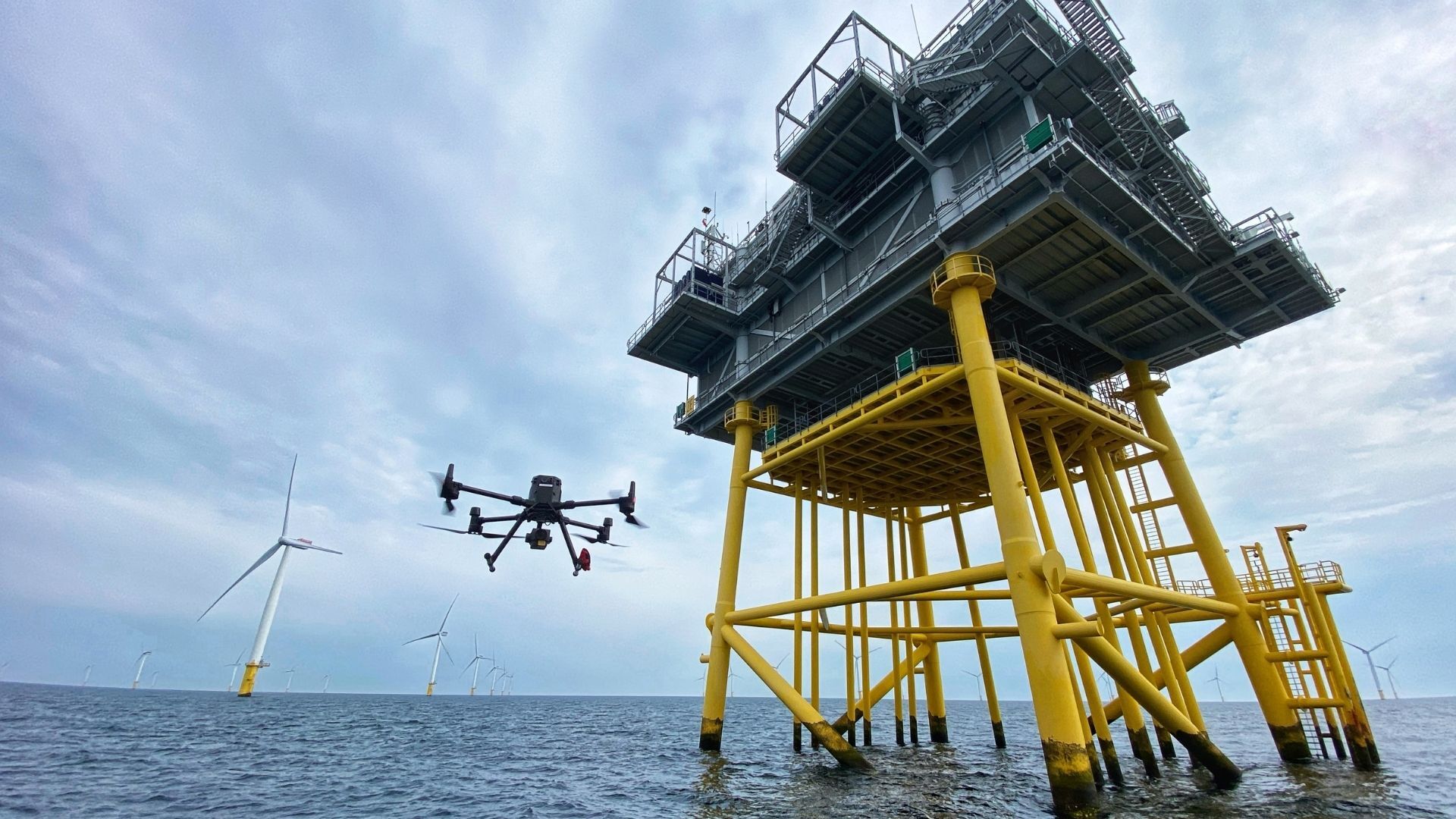Overview
As part of various annual integrity inspection programs for offshore wind assets, OEG implemented a combined Remotely Operated Vehicles (ROV) and Unmanned Aerial Vehicles (UAV) inspection campaign, conducting above-water and subsea inspections in parallel.
This integrated approach eliminated the need for a separate vessel mobilisation, leading to approximately 25% overall campaign cost savings and more streamlined inspection workflows.
Challenges
Historically, above-water structure inspections (e.g., TP platforms and installed components such as boat landing, ladders, safety systems and coating systems) were performed as stand-alone campaigns by either working at height, rope access or UAVs, separate from subsea inspections.
While operationally straightforward, this traditional model resulted in multiple mobilisations, extended inspection timelines, and non-synchronized datasets. With increasing asset numbers and tightening budgets, clients are seeking a more efficient inspection solution without compromising on safety and data quality.
While the integrated approach proved effective, its successful execution required careful planning and adaptation to address several operational challenges encountered during the campaign:
- Initial coordination complexity between ROV and UAV operations required careful planning to avoid operational clashes.
- Weather windows had to be closely monitored to align UAV flight opportunities with ROV schedules.
- Some UAV flight plans had to be dynamically adapted due to vessel positioning constraints.
Workscope
OEG designed and executed a simultaneous UAV and ROV inspection program during the scheduled subsea inspection campaign.
This included deployment of a single multi-purpose vessel equipped for both ROV operations and offshore UAV flights, development of a SIMOPS procedure to coordinate activities safely, and real-time collaboration between UAV and ROV teams to optimize vessel time.
Solution
UAV deployment was planned during ROV operations to minimize operational overlap and maximize productivity.
The inspection program included the following activities:
- ROV: General Visual Inspection, Cathodic Protection Survey, Marine Growth Assessments, CPS inspections and Anode Consumption Measurements.
- UAV: General Visual Inspection and coating integrity assessment of transition piece from water level up to tower connection.
By integrating UAV inspections into the existing ROV subsea inspection campaign, OEG optimised offshore operations and eliminated the need for a separate UAV vessel mobilisation.
This case study is based on normalized data, using a typical scope of 30 WTG foundations, 1 Offshore Substation (OSS) for ROV inspections and 20 WTG foundations and 1 OSS foundation for UAV inspections.
By combining both work scopes within a single vessel campaign, approximately 25% cost savings were achieved compared to the traditional model of conducting separate stand-alone campaigns.
Key drivers for these savings included:
- Avoiding separate mobilisation and demobilisation of resources for UAV inspections;
- Reduced offshore duration and weather downtime;
- More efficient utilization of vessel and personnel through coordinated UAV–ROV operations.
Beyond cost reduction, this integrated approach delivered synchronized above- and below-water data acquisition, enabling more effective integrity assessments by linking asset conditions into one report.
This case study demonstrates how integrating UAV inspections into an existing ROV subsea inspection campaign can deliver significant operational and financial benefits without compromising data quality or safety. By optimising vessel utilisation and synchronising inspection activities above and below the waterline, OEG created a more efficient, cost-effective, and technically robust inspection model.
Key elements underpinning this successful approach include:
- Typical Scope (Normalised Data):
ROV: 30 foundation inspections
UAV: 20 foundation inspections - Cost Efficiency: Approximately 25% savings overall compared to stand-alone campaigns through reduced vessel days, fewer mobilisations, and minimised weather delays.
- Operational Benefits: Shorter offshore durations, improved scheduling flexibility, and more effective use of resources.
- Enhanced Data Quality: Alignment of ROV and UAV inspections allowed for better correlation between integrity assessments below and above the waterline, resulting in a single reporting structure.


.jpg?width=1920&height=1080&name=oeg-offshore-inspection-campaigns-uav-rov-1920x1080%20(1).jpg)

.jpg)